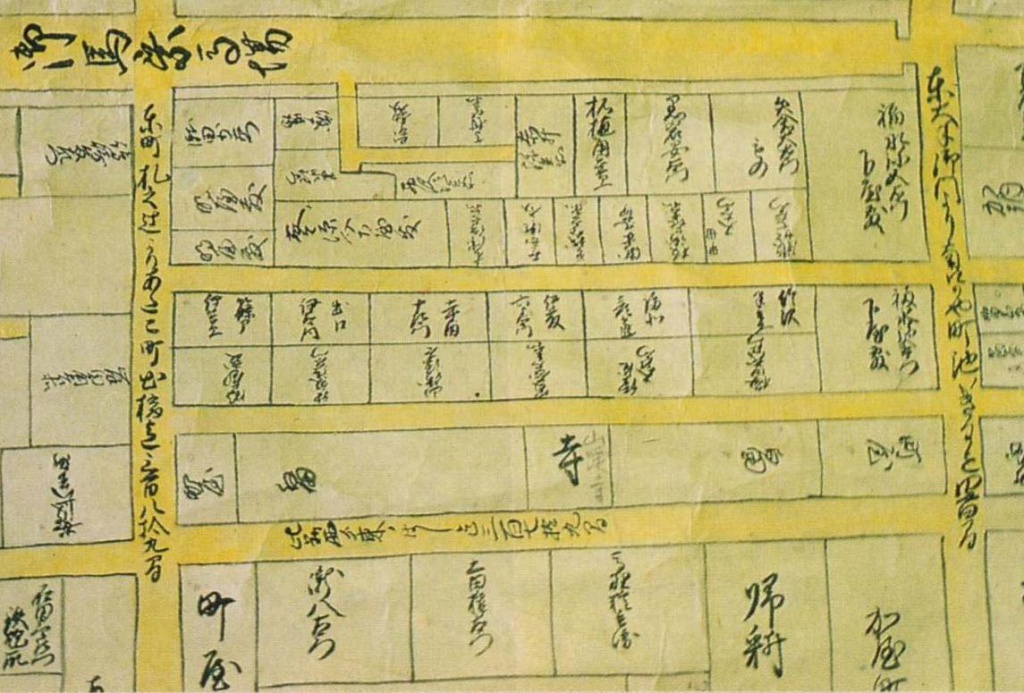
In the town of Iga Ueno Castle in Iga City, the name “Shinobi-cho (Shinobi Town)” still remains. East Shinobi-cho and West Shinobi-cho also remain.
In 1611, Todo Takatora undertook a large-scale reconstruction of Iga-Ueno Castle. The nature of this castle was changed from “a castle for defending Osaka” when it was built by Tsutsui Sadatsugu to “a castle for attacking Osaka”. Takatora also developed the castle town accordingly, creating Misujimachi town to the south of the outer moat and establishing a place for Iga ninja to live further to the south of it. The area came to be known as Shinobi-machi. Thus, because the Iga ninja were warriors of low rank, their residences were placed outside the castle town. However, the time when the Iga ninja lived in the area was limited to the early Edo period, and only the name “Shinobi” remained in the place names.
In the “公室年譜略Kōshitsu Nenpu Ryaku”, which describes the history of Iga Province under the Tsu Domain, it is written, “Among the local samurai who have lived in Iga Province for generations, there are many who have acquired excellent skills in the art of ninja (spy). We have selected ten of them, and have given them each a separate residence outside of the Iga-Ueno Castle”. In other words, Takatora selected those who excelled in the art of ninjutsu and let them live in the castle town.
The residents of Shinobi-cho were responsible for guarding the lord of the domain during the “Sankinkotai” (a system that required the lord of each domain to travel back and forth between Edo and his domain every other year, this system was institutionalized during the reign of Tokugawa Iemitsu). When there was a peasant revolt in the territory, they would investigate and report on it avoiding the public eye. Even in the peaceful days of the Edo period (1603-1867), the Iga ninja practiced ninjutsu and fire fighting techniques, and passed on their skills to the next generation.